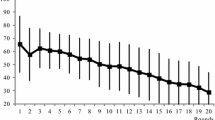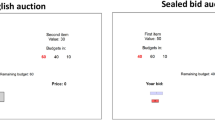Abstract
A buyer in an electronic marketplace may be interested in buying a bundle of items, where any one item in the bundle may not be of particular interest. The emergence of online auctions allow such users to obtain bundles by bidding on different simultaneous or sequentially run auctions. Because the number of auctions and the number of combinations to form the bundles may be large, the bundle bidding problem becomes intractable and the user is likely to make sub-optimal decision given time constraints and information overload. We believe that an automated agent that takes user preferences and budgetary constraints and can strategically bid on behalf of a user can significantly enhance user profit and satisfaction. Our first step to developing such an agent is to consider bundles containing many units of a single item to be bought from auctions that sell only multiple units of one item type. We assume that users obtain goods over several days. Expectations of auctions and their outcome in the future allow the agent to bid strategically on currently open auctions. We present an expected utility based strategy to decide how many items to bid for in the current auctions, and the maximum price to bid for each item. We evaluate our proposed strategy in different configurations by varying the number of items sold per auction, number of concurrently running auctions, expected closing prices, etc. We simulate several multiple unit English auctions per day, over multiple days, where most of the bidders bid their true utilities drawn from a distribution. The strategic bidding agent has knowledge of this distribution and uses it to determine its bids. A strategic agent who looks farther ahead into the future produces larger returns when there are few strategic bidders. We also evaluate the effect of risk attitudes on the relative performance of the bidders.
Similar content being viewed by others
References
Byde, Andrew, C. Preist and Nicholas R. Jennings. (2002). “Decision Procedures for Multiple Auctions,” First International Joint Conference on Autonomous Agents and Multi-Agent Systems, Bologna, Italy, 613–620.
Parkes, David. C. (1999). “iBundle: An Efficient Ascending Price Bundle Auction,” Proceedings of the First ACM Conference on Electronic Commerce, 148–157.
Tesauro, Gerald J. and Jonathan Bredin. (2002). “Strategic Sequential Bidding in Auctions using Dynamic Programming,” First International Joint Conference on Autonomous Agents and Multi-Agent Systems, Bologna, Italy, 591–598.
Author information
Authors and Affiliations
Rights and permissions
About this article
Cite this article
Airiau, S., Sen, S. Strategic Bidding for Multiple Units in Simultaneous and Sequential Auctions. Group Decision and Negotiation 12, 397–413 (2003). https://doi.org/10.1023/B:GRUP.0000003741.29640.ac
Issue Date:
DOI: https://doi.org/10.1023/B:GRUP.0000003741.29640.ac




